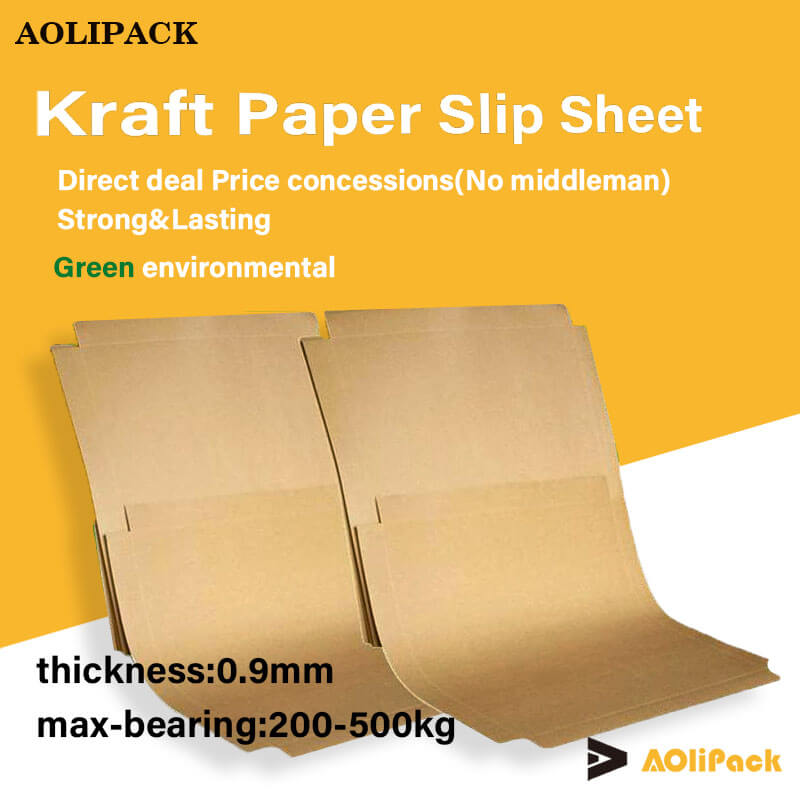Slip Sheet Loading: A Cost-Effective Alternative to Traditional Palletization
Introduction
Slip sheet loading is an innovative logistics and warehousing solution designed to replace traditional wooden or plastic pallets. By using thin, durable sheets (typically made of paperboard, plastic, or corrugated fiberboard), slip sheets allow for efficient loading, unloading, and transportation of goods while reducing costs and improving sustainability.
This article explores the benefits, types, equipment requirements, and best practices for slip sheet loading in modern supply chains.
What is Slip Sheet Loading?
A slip sheet is a flat, thin sheet placed beneath a unit load (such as stacked cartons or bags) to facilitate handling by forklifts equipped with push-pull attachments. Unlike pallets, slip sheets do not require additional height or weight, making them ideal for maximizing container space and reducing shipping costs.
Key Components
Slip Sheet Material: Kraft paper (single/multi-ply), HDPE plastic, or corrugated fiberboard.
Push-Pull Forklift Attachment: A clamp mechanism that grips and drags the slip sheet.
Load Stabilization: Edge guards, stretch film, or adhesive layers prevent shifting.
Advantages of Slip Sheet Loading
1. Cost Savings
Reduced Material Costs: Slip sheets cost 60-80% less than wooden pallets.
Lower Shipping Fees: Eliminates pallet weight (saving freight charges) and increases container capacity.
No Pallet Return Logistics: Disposable or recyclable, avoiding pallet retrieval costs.
2. Space Optimization
Thinner Profile: Slip sheets are 1-3mm thick vs. 100-150mm for pallets, allowing 5-10% more cargo per container.
Better Cube Utilization: Ideal for high-volume, low-weight goods (e.g., consumer packaged goods).
3. Sustainability
Eco-Friendly Materials: Recyclable paperboard or biodegradable plastic options.
Reduced Carbon Footprint: Lighter weight decreases fuel consumption in transport.
4. Hygiene & Safety
No Pest Risks: Unlike wooden pallets, slip sheets comply with ISPM 15 exemption (no fumigation needed).
Cleaner Operations: Preferred in food, pharma, and electronics industries.
Types of Slip Sheets
| Material | Thickness | Best For | Load Capacity |
|---|---|---|---|
| Kraft Paper | 0.5-1.2mm | Light loads (≤1,000 lbs) | Low cost, disposable |
| Corrugated Fiberboard | 3-5mm | Medium loads (≤2,500 lbs) | Recyclable, cushioning |
| Plastic (HDPE) | 1-2mm | Heavy loads (≤4,000 lbs) | Reusable, moisture-resistant |
| Reinforced Composite | 2-4mm | Extreme loads (≤6,000 lbs) | High durability |
How Slip Sheet Loading Works
Step 1: Preparing the Load
Place the slip sheet on a flat surface.
Stack cartons/bags uniformly, ensuring weight distribution.
Secure with stretch wrap or edge guards.
Step 2: Forklift Handling
A push-pull forklift attachment clamps the slip sheet’s extended lip.
The forklift drags the load onto the truck/container (no lifting required).
For unloading, the process is reversed.
Step 3: Storage & Transport
Slip sheet-loaded goods can be stored in racks or floor-stacked.
No pallet jack needed—compatible with standard forklifts.
Industries Using Slip Sheet Loading
✅ Food & Beverage – Reduces contamination risks.
✅ E-commerce & Retail – Optimizes shipping density.
✅ Pharmaceuticals – Meets hygienic storage standards.
✅ Automotive – Handles bulky but lightweight parts.
Challenges & Solutions
| Challenge | Solution |
|---|---|
| Requires specialized forklifts | Train operators on push-pull attachments |
| Load instability | Use anti-slip coatings or edge boards |
| Higher initial setup cost | ROI achieved in 6-12 months via freight savings |
Conclusion
Slip sheet loading is a game-changer for modern logistics, offering cost efficiency, sustainability, and space optimization. While it requires investment in compatible forklifts, the long-term benefits make it a superior alternative to traditional pallets in many industries.
Is slip sheet loading right for your business? Consider your freight volume, product type, and handling equipment to determine if this method aligns with your supply chain strategy.
Call to Action
Interested in implementing slip sheet loading? Contact material handling experts to assess feasibility and ROI for your operations.
Keywords: Slip sheet loading, push-pull forklift, pallet alternatives, cost-effective logistics, sustainable shipping.
Would you like a downloadable slip sheet loading checklist? Let me know!







 wechat consulting
wechat consulting